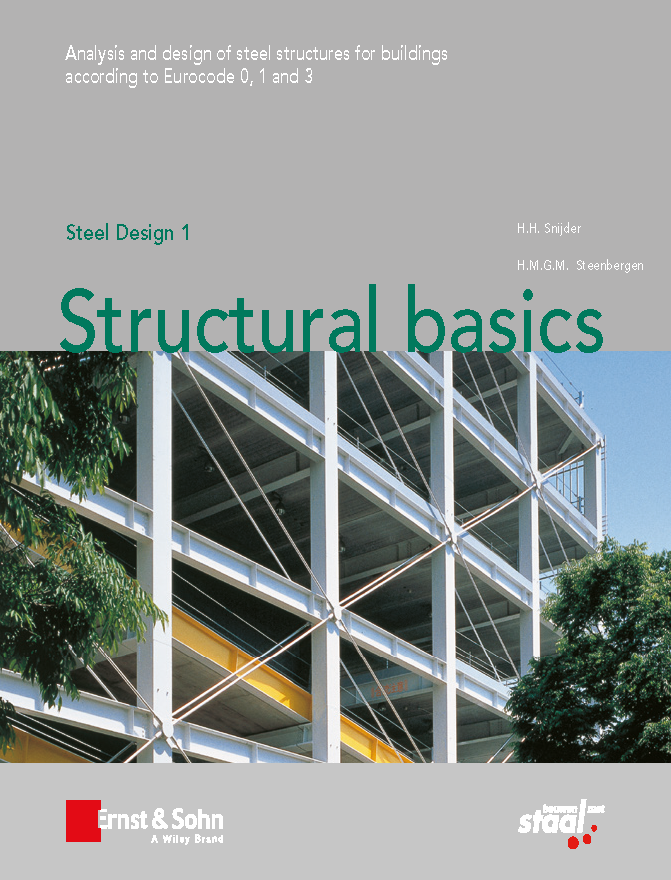About the book
This textbook covers the design and analysis of steel structures for buildings according to EN 1990 (Eurocode 0), EN 1991 (Eurocode 1) and EN 1993 (Eurocode 3).
Chapter 1 describes the theory and background of EN 1990 in terms of structural safety, reliability and the design values of resistances and actions.
Chapter 2 deals with actions and deformations described in EN 1991. The permanent loads and vari¬able actions and in particular the imposed loads and the snow loads and wind actions are discussed. This chapter also contains three worked examples to determine the actions on a floor in a residential house, the actions on a free-standing platform canopy at a station and the wind actions on the façades of an office building.
Chapter 3 is about modelling, discussing the schematisation of the structural system, the joints and the material properties as well as the cross-section properties.
Chapter 4 deals with the classification of frames and the various analysis methods for unbraced and braced frames.
Chapter 5 then goes deeper into these analysis methods to determine the force distribution and defor¬mations.
Chapter 6 deals with the assessment by code-checking of (parts of) the steel structure with EN 1993-1-1 and EN 1993-1-8. At a basic level, the assessment of the resistance of cross-sections, the stability of members under axial forces and the resistance of bolted and welded connections are explained.
Chapter 7 discusses in an extensive way the assessment by code-checking of the resistance of cross-sections, both for single and combined internal forces. The principles of the assessment of the resistance of cross-sections according to elastic and plastic theory are also discussed.

 Bert Snijder / Henri Steenbergen
Bert Snijder / Henri Steenbergen